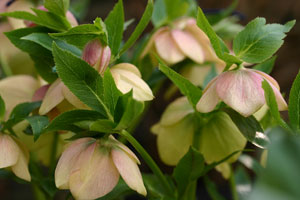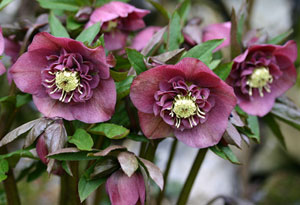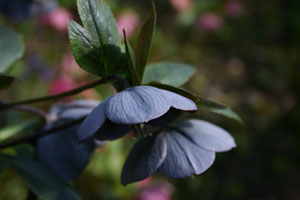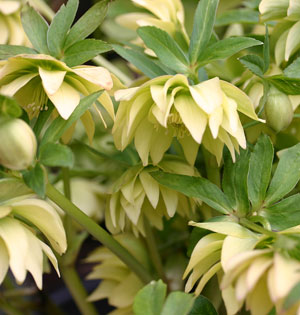
In recent years hellebores have become highly fashionable and it seems that no garden is now complete without them. Certainly they are wonderful plants with many types being easy and rewarding for even those with the most basic horticultural skills.

I have always been a keen gardener, and over twenty years have now passed since I was given my first hellebore. My sister was moving from a country cottage that had clearly been owned at some point by a like-minded person, and I was offered the chance to take some of the unusual plants that grew there to help fill my new garden. Although I remember very little of what I took, the thing that sticks in my mind was a small plant no more than six inches high with leaves the shape of outstretched fingers. I had never seen anything quite like it; compared to the campanula, phlox and roses that grew in my mother's garden it seemed rather exotic - an opinion that was surely reinforced by the strange green flowers that later appeared. I was unable to identify it in any of the books I owned, and it was some time after that I found its name to be Helleborus foetidus, 'the stinking hellebore'. I have no idea where its common name originates, but it strikes me as more than a little unfair and must surely have been given by a person with an extremely sensitive nose!

I now concentrate on growing hellebore hybrids ( H. hybridus formerly H. orientalis ) as these are my particular favourites. In their better forms they offer large and well shaped flowers in a wide range of colours. Mature plants can produce literally hundreds of flowers, and this ability to create a stunning display through winter must be one of their main attractions. In my own garden in north-east Hertfordshire I can expect to see the first buds at around Christmas if not before, and an extended flowering season ensures that the display lasts for many months. Winter is never a dull season for me as I can say, without exaggeration, that my garden is always full of colourful blooms.

Hellebore hybrids make attractive photographic subjects and you may well have seen pictures in books and magazines depicting perfect flowers ranging from snow-white to dark slate-blues and blacks. It was under such circumstances that I originally rushed to a local garden-centre practically waving my money in anticipation of a bulk purchase. I was more than a little disappointed; the plants on sale were rather muddy pinks and whites and the petals were cupped and misshapen, a far cry from the fantastic blooms I had seen illustrated. Undeterred I continued my search by travelling some distance to a famous plant retailer who offered a tempting selection; the plants were not in flower but I took a chance and this, I later discovered, can be a bit of a mistake. The 'yellow spotted' was rather stunted with small green cup-shaped flowers and the 'slate blue' was definitely purple! At this point I realised that obtaining the very best plants would be no easy task and so it first occurred to me to have a go at breeding my own.
One of the problems with commercially grown hybrids is that they are not always products of a rigourous selection process. In others words, if seed is collected from all plants, both good and bad, there is little opportunity for improvements to be made. Seedlings from any one plant can be highly variable, so it is only by careful selection and hand polination that it is possible, over time, to eliminate less desirable examples. Selective breeding by enthusiasts has resulted in great steps forward over the last couple of decades, and the quality of plants is now far higher than when I began my search, but as the number of colours and forms continues to expand many garden centres are only able to offer a very limited choice.

One of the reasons for my own interest is the feeling that I can contribute something positive to the future of these plants. I can see their potential and it is, quite simply, very exciting. By concentrating on certain objectives - I select qualities such as flower shape/colour, leaf shape/size, height, early flowering and disease resistance - I hope to develop new forms and improve on those already available. Initially it was not my aim to sell hellebores, but the very nature of what I do means I have many spare plants needing new homes each year. For this reason I now sell plants, hopefully offering one of the widest selections in the UK. Perhaps some of you less familiar with these winter treasures will feel inspired to try a few in your own gardens - it's often been said, with great accuracy, that they are highly addictive things!
2004